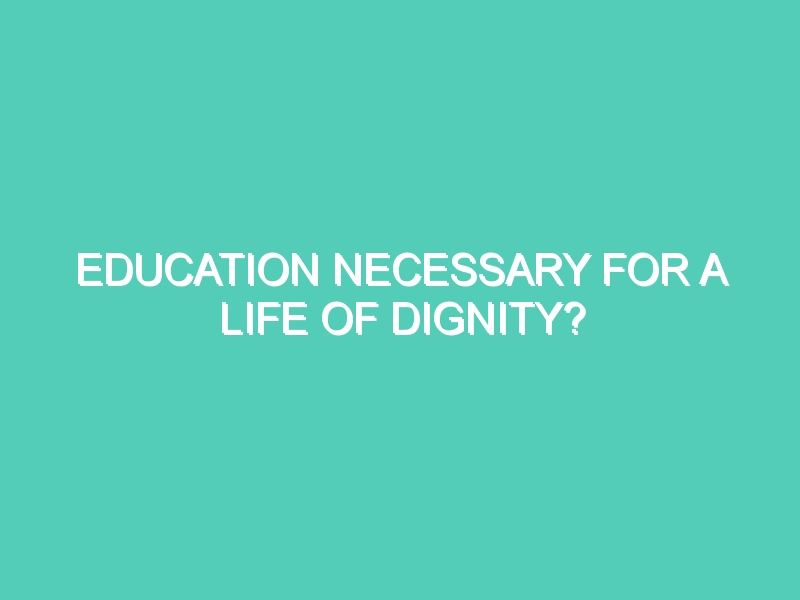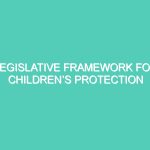Educational methods include teaching, training, storytelling, discussion and directed research.AccordingInternational Covenant on Economic, Social and Cultural Rights education is a basic right. Both conventions recognize the right to right to free, compulsory primary education for all, an obligation to develop secondary education accessible to all, on particular by the progressive introduction of free secondary education, as well as an obligation to develop equitable access to higher education, ideally by the progressive introduction of free higher education.Education is the process of facilitating learning, or the acquisition of knowledge, skills, values, beliefs, and habits. Art. 26 of the Universal Declaration of Human Rights states that “Everyone has the right to education. Education shall be free, at least in the elementary and fundamental stages. Elementary education shall be compulsory. Technical and professional education shall be made generally available and higher education shall be equally accessible to all on the basis of merit. Education shall be directed to the full development of the human personality and to the strengthening of respect for human rights and fundamental freedoms. It shall promote understanding, tolerance and friendship among all nations, racial or religious groups, and shall further the activities of the United Nations for the maintenance of peace. Parents have a prior right to choose the kind of education that shall be given to their children.”[1]Quality education aims to ensure the development of a fully-rounded human being.[2]It is one of the most powerful tools in lifting socially excluded children and adults out of poverty and into society.[3] UNESCO data shows that if all adults completed secondary education, globally the number of poor people could be reduced by more than half.[4]It narrows the gender gap for girls and women. A UN study showed that each year of schooling reduces the probability of infant mortality by 5 to 10 per cent.[5]For this human right to work there must be equality of opportunity, universal access, and enforceable and monitored quality standards.[6]Quality related issues are far powerful than poverty.[7] Students are not at all encouraged to think but they are asked to memorize pre-defined questions for exams.[8] So, for many students clearing examination at the end of the session, passing their exam becomes more important than gaining knowledge.[9] Also, as per the new CBSE rule, every student is supposed to be promoted to the next class irrespective of marks in their examination.[10] Hence majority of students do not bother to study, which means a decline in their education level.[11] Neither students nor teachers take any interest in studies which is why the level of education is declining in India despite many efforts.[12]The foundation to turn India into a strong nation has to be laid down at primary and rural levels and so the quality of education right from the beginning should be excellent. Education and text books should be made interesting. For rural students textbooks related to their culture, their traditions and values should also be there so as to create their interest in studies.The reasons behind so many drop-outs in spite of free education should be found out as this is a hurdle on the road to progress. Improvement in the condition of government schools, education quality, committed teachers and more salaries to these teachers should be part of developmentThe new EFA Global Monitoring Report 2009 tracks progress towards universal education. Showing how the failure of governments to tackle deep and persistent inequalities in education is consigning millions of children to lives of poverty and diminished opportunity.[13]Each and every obstacle, paradox and misconception that these publications attempt to address and counter are alive and well today, giving duty bearers – governments and the international community, as well as those discriminating in the misconceived name of religion, culture or gender – excuses for inaction or retrogression.[14]
Education is about 4 As –
Availability:
Education should be available for all and without cost, minimum the primary education and fundamental level.[15] The government should be able to make it available for the citizen.[16] The governments have to make sure availability of school.” States parties recognize the right of the child to education, and with a view to achieving this right progressively and on the basis of equal opportunity, they shall in particular; make primary education compulsory and available free to all”.[17] The primary education and higher and also basic education should be available for all. Article 13.2(a) of the International Covenant on Economic, Social and Cultural Rights says, Primary education shall be compulsory and available free to all.[18] The basic education should be available.[19]
Accessibility:
All of the educational institute should be accessible for everybody. Nobody can be discriminate on the basis of race, sex, color, religious, economic status, language and immigration status or disability.[20] The school should be safe for all, the school should be reasonable distance from the community.[21] Education should be affordable to all and text book.[22] Higher education should be accessible for all and also equitable for all. “Persons with disabilities can access an inclusive, quality and free primary education and secondary education on an equal basis with others in the communities in which they live”.[23]
Acceptability:
The education learning method of school should be acceptable to the parents for their children and they should be fulfilling the national norms that they set by the government also should be providing the equality educations.[24] The method of education also is easy and acceptable to all.[25] Adaptability should be depending on the learning method and life style.[26]
Adaptability:
Adaptability means the education has to be flexible and easy.[27] Adaptability promotes equitable outcomes for learners.[28] The education should be adaptable for children and youth and also higher student.[29]
The fulfillment of the right to education of the four “A’s” ( availability, accessibility, acceptability and adaptability) the method of the 4 As have to be fulfill.Education is a ray of light in the darkness.[30] It certainly is a hope for a good life.[31] Education is a basic right of every Human on this Planet.[32] To deny this right is evil.[33] Uneducated youth is the worst thing for Humanity.[34] Above all, the governments of all countries must ensure to spread Education.[35]
Article Written By- Soumya Sharma
(HRDI Work From Home Internship)
[1]Right to education available at: https://wikimili.com/en/Right_to_education (last visited on July 15, 2020).
[2]Right to education available at: https://en.unesco.org/news/what-you-need-know-about-right-education (last visited on July 15, 2020).
[3]Ibid.
[4]Ibid.
[5]Ibid.
[6]Ibid.
[7]Rural education in India available at: https://www.mapsofindia.com/my-india/education/india-needs-education-especially-rural-education (last visited on July 16, 2020).
[8]Ibid.
[9]Ibid.
[10]Ibid.
[11]Ibid.
[12]Ibid.
[13]Right to education project available at: https://www.right-to-education.org/node/232 (last visited on July 16, 2020).
[14]Ibid.
[15]Right to education as a human right available at: https://www.ukessays.com/essays/education/the-right-to-education-as-a-human-right-education-essay.php (last visited on July 16, 2020).
[16]Ibid.
[17]Ibid.
[18]Ibid.
[19]Ibid.
[20]Supra note 13.
[21]Ibid.
[22]Ibid.
[23]Ibid.
[24]Understanding education as a right available at: https://www.right-to-education.org/page/understanding-education-right (last visited on July 16, 2020).
[25]Ibid.
[26]Ibid.
[27]Right to Education ; Situation around the world available at: https://www.humanium.org/en/right-to-education/(last visited on July 16, 2020).
[28]Ibid.
[29]Ibid.
[30]Importance of education available at: https://www.toppr.com/guides/essays/importance-of-education/ (last visited on July 16, 2020).
[31]Ibid.
[32]Ibid.
[33]Ibid.
[34]Ibid.
[35]Ibid.



